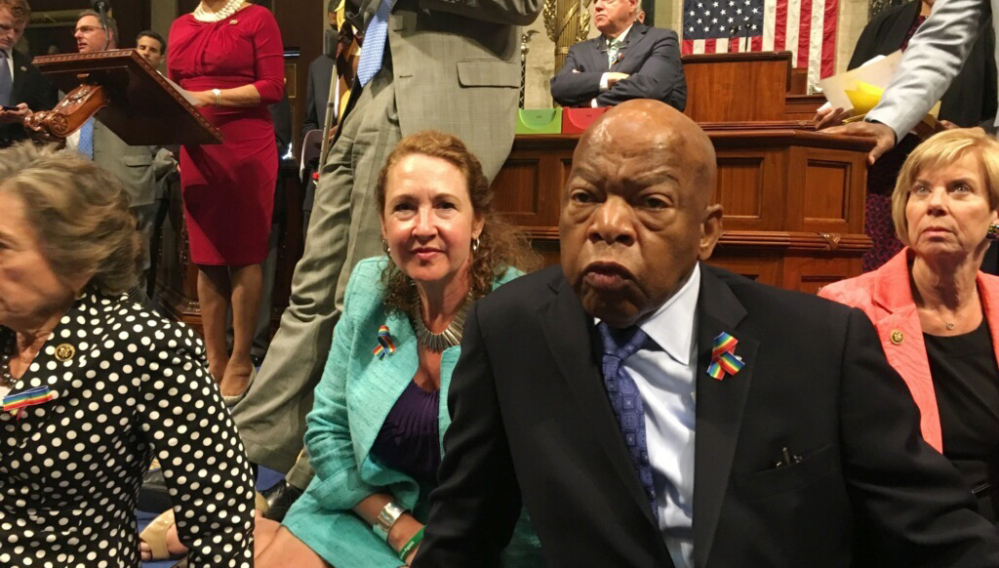Finally, members of the U.S. House and Senate are showing some resolve to do something about gun violence. But is this the best they can do?
On Wednesday, Democratic members of the House of Representatives sat on the floor of the House chamber, determined not to allow any business to be conducted until there was a debate and vote on several gun control measures, including a version of “No fly, no buy” that would require that anyone prohibited from buying an airline ticket because their name is on a government terrorist watch list to be also prohibited from buying a firearm.
The demonstration was led by civil rights-era hero Rep. John Lewis, D-Ga., and joined by Maine’s 1st District Rep. Chellie Pingree, who said, “If you were to walk outside the House right now and stop someone on the street and ask the simple question, ‘Should terrorists be allowed to buy guns?’ You would get a simple answer. They would say, ‘No, of course terrorists should not be allowed to buy guns.’ But they can, and Republicans here in the House won’t even let us have a debate and vote on it.”
Meanwhile in the Senate, Maine Republican Susan Collins was working hard to draft a bipartisan version of “no fly, no buy,” which was able to withstand a procedural vote. Her colleague, Maine Sen. Angus King, called it “good ol’ Maine common sense.”
But is it, really? All it takes to get on a watch list is a government agent’s unsubstantiated suspicion. Collins’ amendment refers only to the most restrictive terror lists that require a higher standard of proof, but still do not call for judicial oversight. If there were real, credible evidence of terrorist activity, criminal charges would be more appropriate than denying the suspect access to air travel or gun buying.
In the absence of evidence of a criminal act, letting the government take action against citizens doesn’t sound like common sense.
And only a small subset of gun homicides involve terrorists, at least in the way that terrorism is thought of in the post-9/11 world. Of the approximately 11,000 U.S. gun homicides in 2015, only 22 meet the common definition of terrorism (six in Chattanooga, Tennessee, and 16 in San Bernadino, California). The other 10,988 or so could not have been affected by the use of a terrorist watch list.
Gang violence is not considered terrorism, even though gangs use violence to intimidate. Domestic violence is not considered terrorism, even though abusers use violence to control.
When we say terrorism, we are almost always talking about violence perpetrated by political/religious groups connected with outside-the-mainstream sects of Islam based in the Mideast and southern Asia.
So names on the watch list are bound to overrepresent people from certain national and religious backgrounds. People likely to commit crimes with guns do not fall into such neat categories.
Terrorists strike where they find a weakness, and America’s tolerance of gun violence has proven to be a public safety weak point, as evidenced by the San Bernardino and Orlando attacks.
But attempting to reduce terrorist shootings would do almost nothing to limit gun violence and probably very little to prevent terrorism, because terrorists have shown a willingness to use whatever means are available to them.
Pingree, Collins and King deserve credit for trying to do something about gun violence in the wake of the Orlando massacre, but they should work harder to do something more meaningful. “No fly, no buy” might be a step in the right direction, but it’s a very small step.
______________________
CORRECTION: This editorial was updated at 6:10 p.m. on June 27, 2016, to clarify that the terror watch lists that Collins proposes using would require law enforcement to meet the “credible information” standard of proof, not the less-restrictive “reasonable suspicion” standard. Also, the Senate remains in session this week.
Send questions/comments to the editors.



Comments are no longer available on this story